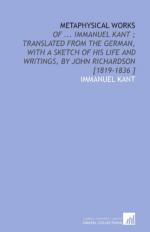|
This section contains 3,739 words (approx. 13 pages at 300 words per page) |

|
SOURCE: "Richardson's Indians," in Canadian Literature, No. 81, Summer, 1979, pp. 86-94.
In the following essay, Monkman discusses Richardson's portrayal of Native Americans and identifies similar patterns of characterization in the works of James Fenimore Cooper.
No writer of nineteenth-century Canada more fully explored the literary potential of the Indian than Major John Richardson. In novels such as Wacousta (1832) and The Canadian Brothers (1840), Richardson's interest is in the conflict between red man and white man on the Canadian-American frontier. In later formula novels such as Hardscrabble (1851) and Wau-Nan-Gee (1852), he more directly appeals to the American reading public by shifting his focus to the events preceding the founding of Chicago. Yet Richardson's interest in the Indian was not limited to an exploration of his potential in frontier fiction; Tecumseh (1828), a narrative poem paying tribute to the Indian warrior whom he met as a young man, was Richardson's first published volume, and...
|
This section contains 3,739 words (approx. 13 pages at 300 words per page) |

|


